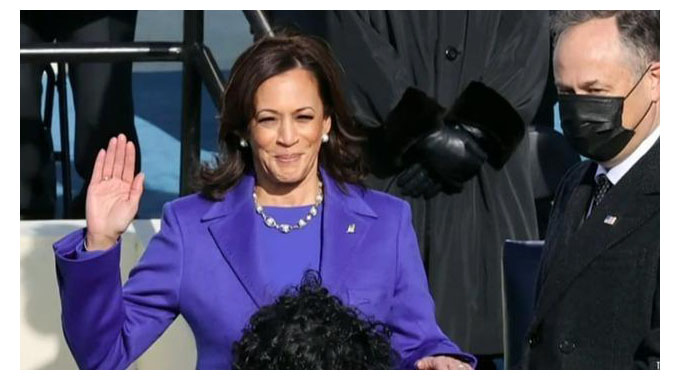Principles of vaccination

Health, Dr Tatenda Simango
I hope I find you well and in good health. This year, January Disease has taken on a vicious stance. Christmas saw everyone letting their guard down and we are paying the ultimate price; Covid-19 infection levels have robbed us of many loved ones.
We all need an end to this malady, but it does not seem to be anywhere is sight; trees have been stripped of their leaves for home remedies, hospitals are overwhelmed, and pharmacies are running low on drug stocks.
Scientists and policy makers are conflicting: which drug, which vaccine and to whom shall it be given?
Vaccination/immunisation for Covid-19 is an area of much debate with some rejecting it before it has been offered to them. In this week’s article we shall start looking at the basic principles of vaccination, which is used interchangeably with immunisation. There after we will discuss vaccination options being developed for Covid-19.
The body has natural defence against infection of any kind, this is innate immunity for example the skin. From birth as one is exposed to different disease-causing organisms, we start to acquire a stronger immune (disease fighting) system. At birth one is given disease fighting ability from the mother via the placenta and then more so via breastfeeding (passive immunity).
The national immunisation programme is designed to give active immunity through vaccinations from the ‘killer diseases’ (tuberculosis, tetanus, diphtheria, whooping cough, hepatitis B, polio, measles, pneumococcus, influenza and rota virus). This develops immunity when the body is exposed to that disease. It has a memory that is triggered to mount a defence against that illness thus preventing symptoms or minimising the severity of the symptoms.
Immunity is protection from an infectious disease. If you are immune to a disease, you can be exposed to it without becoming infected. A vaccine is a product that stimulates a person’s immune system to produce immunity to a specific disease, protecting the person from that disease.
Vaccines are usually administered through needle injections but can also be administered by mouth or sprayed into the nose. Vaccination is the act of introducing a vaccine into the body to produce immunity to a specific disease. Lastly immunisation is a process by which a person becomes protected against a disease through vaccination.
Immunisation is a successful and cost-effective public health intervention that led to global eradication of diseases like smallpox and poliomyelitis in large areas of the world.
There are various types of vaccines:
· Weakened, or attenuated vaccines consist of microorganisms that have lost the ability to cause serious illness but retain the ability to stimulate immunity. They may produce a mild or subclinical form of the disease. Include for measles, polio (the Sabin vaccine) and tuberculosis.
· Vaccines contain a microorganism or virus in a weakened, live or killed state, or proteins or toxins from the organism.
· Inactivated vaccines are those that contain organisms that have been killed or inactivated with heat or chemicals. Vaccines against rabies, polio (the Salk vaccine), some forms of influenza, and cholera are made from inactivated microorganisms.
· Subunit vaccine is made from proteins found on the surface of infectious agents. Vaccines for influenza and hepatitis B are of that type.
· When toxins, the metabolic by-products of infectious organisms, are inactivated to form toxoids, they can be used to stimulate immunity against tetanus, diphtheria, and whooping cough (pertussis).
· Recombinant DNA technology has also proven useful in developing vaccines to viruses that cannot be grown successfully or that are inherently dangerous. Genetic material that codes for a desired antigen is inserted into the attenuated form of a large virus, such as the vaccinia virus, which carries the foreign genes “piggyback”. The altered virus is injected into an individual to stimulate antibody production to the foreign proteins and thus confer immunity.
When a sufficiently large percentage of a population has been vaccinated, herd immunity results. Herd immunity protects those who may be immuno-compromised and cannot get a vaccine because even a weakened version would harm them.
The practice of immunisation dates back hundreds of years. Buddhist monks drank snake venom to confer immunity to snake bite and variolation. Edward Jenner is considered the founder of vaccinology in the West in 1796, after he inoculated a 13-year-old-boy with cowpox (a mild illness spread from cattle), by taking pus from the cowpox lesions on a milkmaid’s hands and introducing the fluid into a cut he made in the boy’s arm. Six weeks later, Jenner exposed the boy to smallpox, but he did not develop the infection then, or on 20 subsequent exposures. In 1798, the first smallpox vaccine was developed.
Louis Pasteur, French biologist, in 1885 saved a nine-year-old boy’s life after he was bitten by a rabid dog, by injecting him with a weakened form of the rabies virus each day for 13 days. The boy never developed rabies and the treatment was heralded a success. Pasteur coined his therapy a “rabies vaccine”, expanding the meaning of vaccine beyond its origin.
His experiments spearheaded the development of live attenuated cholera vaccine and inactivated anthrax vaccine in humans (1897 and 1904, respectively).
In 1923, Alexander Glenny perfected a method to inactivate tetanus toxin with formaldehyde. The same method was used to develop a vaccine against diphtheria in 1926. Viral tissue culture methods developed from 1950-1985 and led to the advent of the Salk (inactivated) polio vaccine and the Sabin (live attenuated oral) polio vaccine.
The past two decades have seen the application of molecular genetics and its increased insights into immunology and genomics applied to vaccinology.
Next week we will have a closer look at how the vaccination trial process is conducted and the different vaccines that are on trial. Stay safe and avoid unnecessary travel.
Dr Tatenda Simango can be contacted on [email protected] or follow him on Facebook@ 9th Avenue Surgery.











Comments